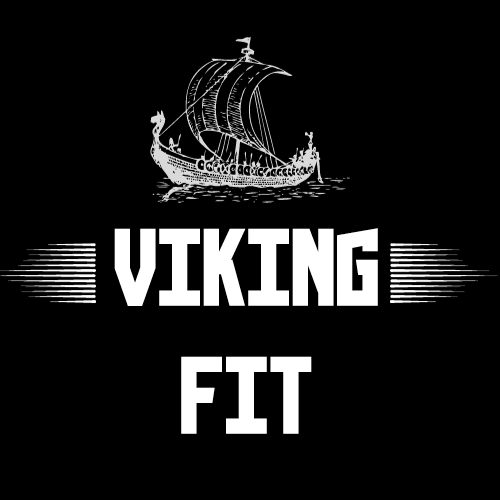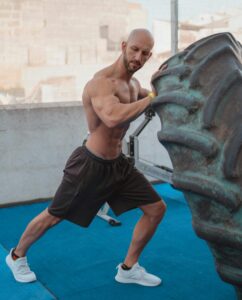“Discover the best back workouts with dumbbells to strengthen your back, improve posture, and build muscle. Learn effective exercises, routines, and tips for optimal results.”
Table of Contents
Introduction
A strong and sculpted back is crucial for overall fitness, posture, and aesthetics. Back workouts with dumbbells offer an effective and versatile way to target these muscles, whether you’re at home or in the gym. In this guide, we’ll delve into the benefits of back workouts, explore the best exercises using dumbbells, and provide a comprehensive routine to help you achieve your fitness goals. By focusing on “back workouts with dumbbells,” you can build a stronger, healthier, and more aesthetically pleasing back.
Benefits of Back Workouts
Your back muscles play a vital role in your body’s overall strength and functionality. Here are some key benefits of incorporating back workouts into your fitness regimen:
Improved Posture
Strengthening your back helps you maintain a better posture, reducing the risk of slouching and associated discomfort. Poor posture can lead to chronic pain, especially in the neck and lower back, and can also affect your overall appearance. By incorporating back workouts into your routine, you can correct imbalances and ensure that your spine is well-supported.
Injury Prevention
A strong back supports your spine, reducing the risk of injuries in daily activities and other workouts. Whether you’re lifting heavy objects or simply going about your daily routine, having a well-developed back can protect you from strains and sprains. Additionally, a strong back can help prevent common issues such as herniated discs and sciatica.
Enhanced Aesthetics
Building muscle in your back contributes to a well-defined V-shape, enhancing your overall physique. This V-taper creates the illusion of a smaller waist and broader shoulders, which is often a desired look for many fitness enthusiasts. Moreover, a muscular back can improve the fit of your clothing, making you look more confident and polished.
Increased Strength
A strong back improves your performance in other exercises and daily tasks, providing a solid foundation for overall strength. Many compound movements, such as deadlifts and squats, rely heavily on back strength. By developing your back muscles, you can lift heavier weights and improve your overall athletic performance.
Versatility and Convenience
Dumbbells are a versatile and convenient tool for back workouts. Unlike machines, which can be bulky and expensive, dumbbells are relatively inexpensive and can be used at home or at the gym. They also allow for a greater range of motion and can be used for a variety of exercises that target different parts of the back.
By understanding the importance of back workouts, you’re already on the path to a healthier and more balanced fitness routine. Next, we’ll explore why dumbbells are an excellent choice for these exercises.
Why Use Dumbbells for Back Workouts?
Dumbbells are a popular choice for back workouts due to their versatility, convenience, and effectiveness. Here are some reasons why you should consider incorporating dumbbells into your back workout routine:
Versatility and Range of Motion
Dumbbells offer a greater range of motion compared to machines and even barbells. This allows you to target your back muscles from various angles, leading to more balanced and comprehensive muscle development. Whether you’re performing rows, deadlifts, or shrugs, dumbbells can help you achieve a full range of motion and maximize muscle activation.
Convenience and Accessibility
Dumbbells are relatively inexpensive and can be used at home or at the gym. This makes them an accessible option for people with different fitness levels and schedules. Additionally, dumbbells come in a variety of weights, allowing you to progressively increase the resistance as you get stronger.
Unilateral Training
Dumbbells allow for unilateral training, which means you can work one side of your body at a time. This is particularly beneficial for addressing muscle imbalances and ensuring that both sides of your back are equally strong. Unilateral training can also improve your coordination and stability, as it requires more balance and control compared to bilateral exercises.
Improved Stabilization
Using dumbbells requires more stabilization compared to machines or barbells. This engages your core and other stabilizing muscles, leading to improved overall strength and coordination. Additionally, the need for stabilization can help you develop better proprioception, which is your body’s ability to sense its position and movement in space.
Customizable Workouts
With dumbbells, you can easily modify your workouts to suit your specific needs and goals. Whether you’re focusing on hypertrophy, strength, or endurance, dumbbells allow you to adjust the weight, reps, and sets accordingly. This flexibility makes them an ideal tool for both beginners and advanced lifters.
Safety
Dumbbells are generally safer to use compared to barbells, especially for beginners. If you lose balance or fatigue during an exercise, it’s easier to drop a dumbbell without risking injury. Additionally, dumbbells can be used for a variety of exercises that don’t require a spotter, making them a safer option for solo workouts.
Now that we understand the benefits of using dumbbells for back workouts, let’s dive into the top exercises that you can incorporate into your routine.
Top Back Workouts with Dumbbells
1. Dumbbell Rows
Description and Step-by-Step Instructions
Dumbbell rows are a fundamental exercise for building back strength. They primarily target the latissimus dorsi, rhomboids, and trapezius muscles.
- Starting Position: Stand with your feet shoulder-width apart, holding a dumbbell in each hand. Bend your knees slightly and hinge at your hips so your torso is at a 45-degree angle to the floor. Keep your back straight and your core engaged.
- Execution: Pull the dumbbells towards your torso, keeping your elbows close to your body. Squeeze your shoulder blades together at the top of the movement.
- Lowering Phase: Slowly lower the dumbbells back to the starting position, maintaining control throughout the movement.
Variations
- Single-Arm Dumbbell Row: Perform the exercise one arm at a time, using a bench for support.
- Bent-Over Dumbbell Row: Bend over more at the hips to increase the angle of your torso, which can target the lower portion of your back more effectively.
- Incline Bench Dumbbell Row: Lie face down on an incline bench and perform the row, which can help reduce strain on your lower back.
Muscles Targeted
- Latissimus dorsi
- Rhomboids
- Trapezius
- Biceps (secondary)

2. Dumbbell Deadlifts
Description and Step-by-Step Instructions
Dumbbell deadlifts are an excellent exercise for developing overall back strength. They primarily target the lower back, glutes, and hamstrings.
- Starting Position: Stand with your feet hip-width apart, holding a dumbbell in each hand. Keep your arms straight and your shoulders back.
- Execution: Hinge at your hips and lower the dumbbells towards the floor, keeping your back straight and your core engaged. Your knees should bend slightly as you lower the weights.
- Lifting Phase: Push through your heels and extend your hips to return to the starting position.
Variations
- Stiff-Legged Dumbbell Deadlift: Keep your knees slightly bent and focus on hinging at the hips to target your hamstrings and lower back more intensely.
- Romanian Dumbbell Deadlift: Similar to the stiff-legged variation, but with a greater emphasis on keeping the dumbbells close to your legs throughout the movement.
Muscles Targeted
- Erector spinae (lower back)
- Glutes
- Hamstrings
- Lats (secondary)

3. Dumbbell Pullovers
Description and Step-by-Step Instructions
Dumbbell pullovers are a versatile exercise that targets both the back and chest. When performed correctly, they can effectively engage the latissimus dorsi and other upper back muscles.
- Starting Position: Lie on a bench with only your upper back and shoulders supported, holding a dumbbell with both hands. Your feet should be flat on the floor.
- Execution: Lower the dumbbell behind your head in a controlled manner, keeping your arms slightly bent.
- Lifting Phase: Pull the dumbbell back over your chest, focusing on squeezing your lats at the top of the movement.
Variations
- Floor Dumbbell Pullover: Perform the exercise on the floor for added stability.
- Single-Arm Dumbbell Pullover: Use one arm at a time to increase the intensity and focus on each side of your back.
Muscles Targeted
- Latissimus dorsi
- Teres major
- Pectorals (secondary)
- Triceps (secondary)

4. Renegade Rows
Description and Step-by-Step Instructions
Renegade rows are a compound exercise that targets the back, core, and shoulders. They are particularly effective for building stability and strength.
- Starting Position: Begin in a push-up position with a dumbbell in each hand.
- Execution: Perform a push-up, then row one dumbbell towards your hip while balancing on the other hand.
- Alternating: Lower the dumbbell back to the floor and repeat on the other side.
Tips for Maintaining Form
- Keep your core engaged to prevent your hips from sagging.
- Avoid rotating your torso; aim to keep your shoulders and hips square to the floor.
Muscles Targeted
- Latissimus dorsi
- Rhomboids
- Trapezius
- Core
- Shoulders (secondary)
5. Dumbbell Shrugs
Description and Step-by-Step Instructions
Dumbbell shrugs are a simple yet effective exercise for targeting the trapezius muscles. They help in building upper back strength and improving shoulder stability.
- Starting Position: Stand with your feet shoulder-width apart, holding a dumbbell in each hand with your arms at your sides.
- Execution: Lift your shoulders towards your ears in a shrugging motion, keeping your arms straight.
- Lowering Phase: Lower your shoulders back to the starting position in a controlled manner.
Common Mistakes to Avoid
- Avoid rolling your shoulders; focus on lifting them straight up and down.
- Do not use excessive weight that causes you to lose form.
Muscles Targeted
- Trapezius
- Levator scapulae
- Rhomboids (secondary)

Tips for Maximizing Your Back Workouts
To get the most out of your back workouts with dumbbells, consider the following tips:
Proper Form and Technique
Maintaining proper form is crucial for preventing injuries and maximizing muscle activation. Here are some key points to remember:
- Keep Your Back Straight: Avoid rounding your back during exercises, as this can lead to strain and injury.
- Engage Your Core: A strong core provides stability and support for your back during lifts.
- Control the Weight: Focus on controlled movements, avoiding momentum and jerking motions.
Progressive Overload
To continue making progress and building strength, gradually increase the weight and intensity of your workouts. This concept, known as progressive overload, involves challenging your muscles with heavier weights or higher reps over time.
Rest and Recovery
Allowing your muscles to rest and recover is essential for growth and injury prevention. Ensure you’re getting enough sleep, and consider incorporating active recovery days (e.g., light cardio or yoga) into your routine. here is best tricks you can use it How to Speed Up Muscle Strain Recovery: Proven Strategies and Tips
Nutrition Tips for Muscle Growth
Proper nutrition is key to supporting your back workouts and muscle growth. Here are some dietary tips to keep in mind:
- Protein Intake: Aim for a high-protein diet to support muscle repair and growth. Include sources such as lean meats, fish, eggs, and plant-based proteins.
- Hydration: Stay hydrated to maintain performance and recovery. Aim for at least 8 glasses of water per day.
- Balanced Diet: Ensure you’re consuming a balanced diet with a mix of carbohydrates, fats, and vitamins to fuel your workouts and overall health.
Common Mistakes to Avoid
Avoid these common mistakes to ensure you’re getting the most out of your back workouts:
Overtraining
While it’s important to challenge yourself, overtraining can lead to burnout and injury. Ensure you’re allowing adequate rest between workouts and listening to your body’s signals.
Poor Form
Using improper form can negate the benefits of an exercise and increase the risk of injury. Take the time to learn and practice the correct technique for each movement.
Neglecting Other Muscle Groups
While focusing on your back is important, neglecting other muscle groups can lead to imbalances and poor overall fitness. Ensure you’re incorporating a well-rounded routine that targets all major muscle groups.
Conclusion
Back workouts with dumbbells are a versatile and effective way to build strength, improve posture, and enhance your overall physique. By incorporating these exercises into your fitness routine, you can achieve a stronger, healthier, and more aesthetically pleasing back. Remember to focus on proper form, progressive overload, and adequate rest and nutrition to maximize your results.
Start incorporating these dumbbell exercises into your routine today, and experience the benefits of a strong and sculpted back. Don’t forget to share this post, leave comments, and subscribe for more fitness tips and guides!


